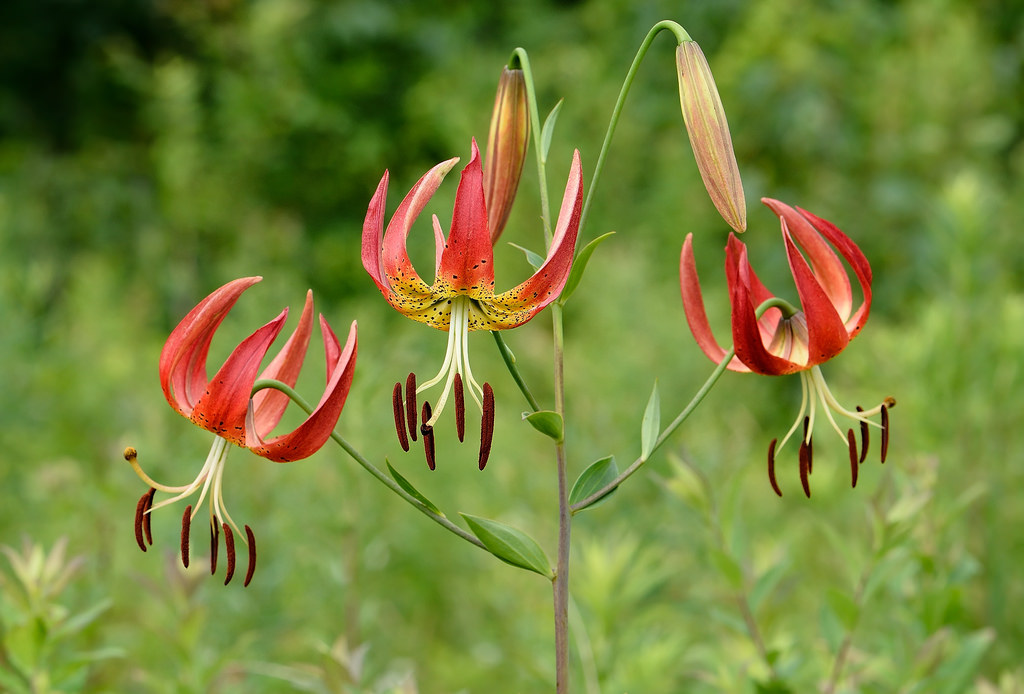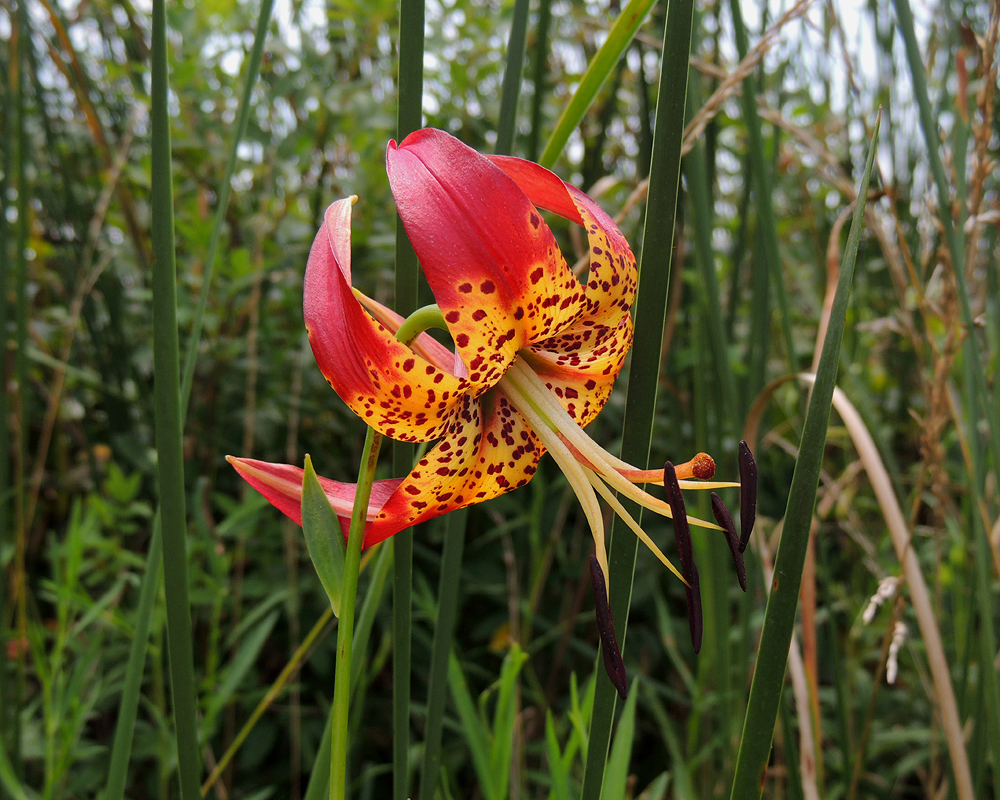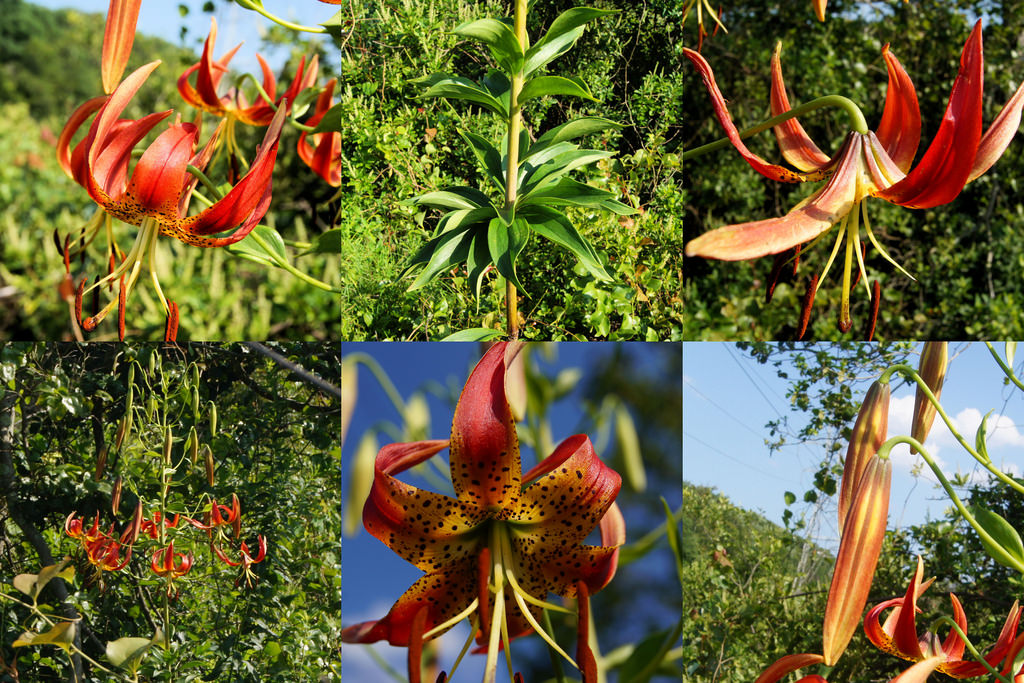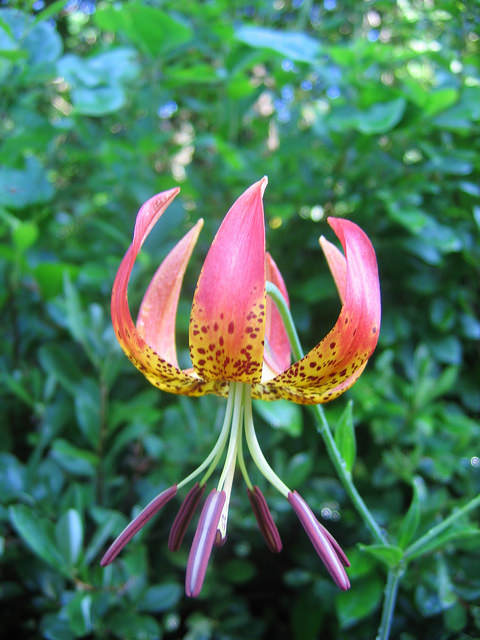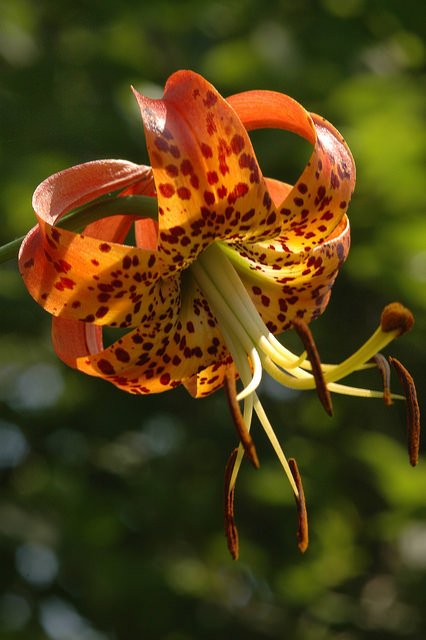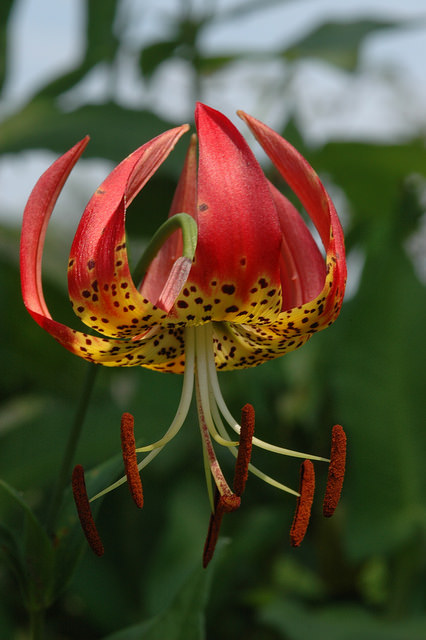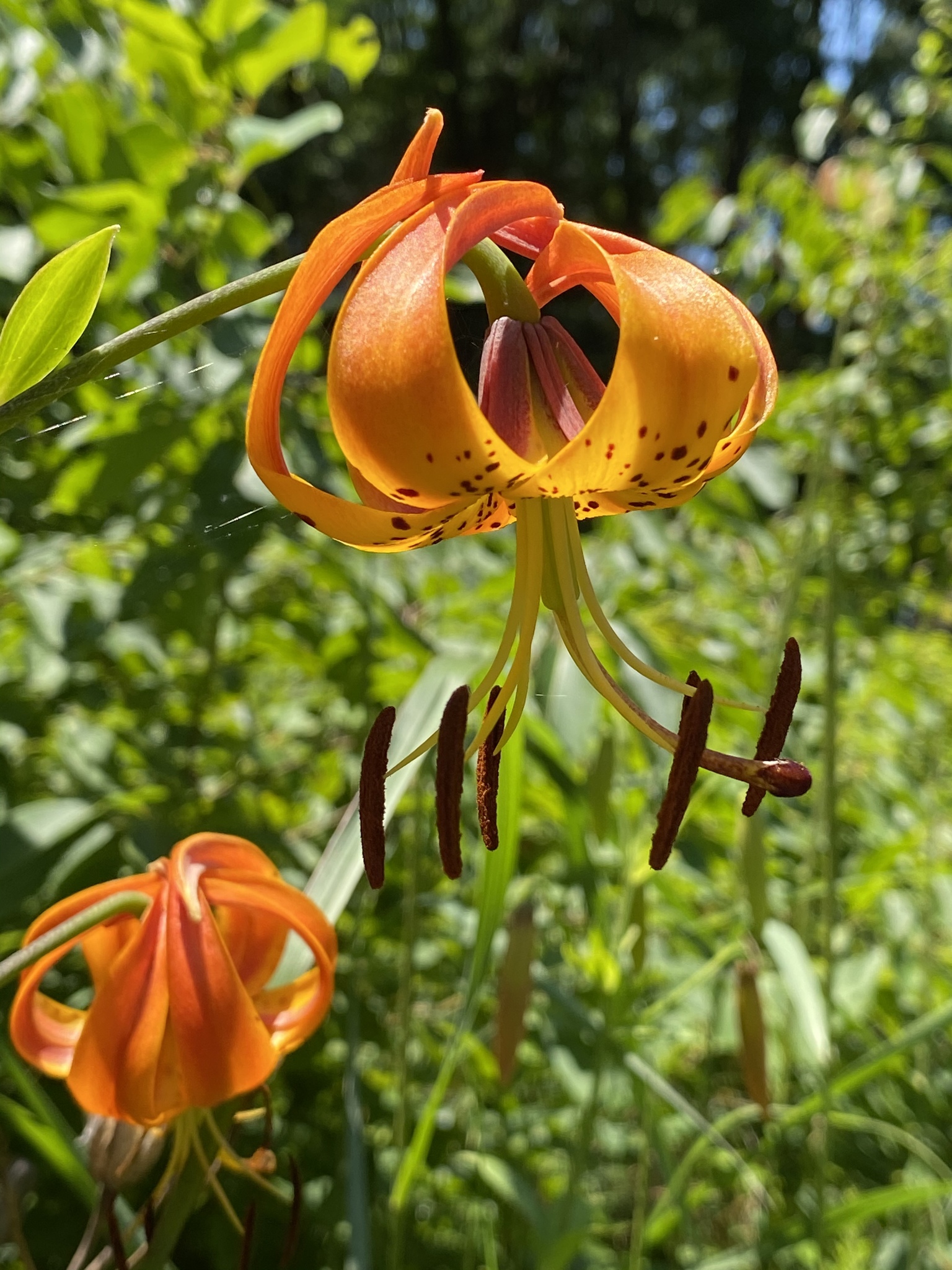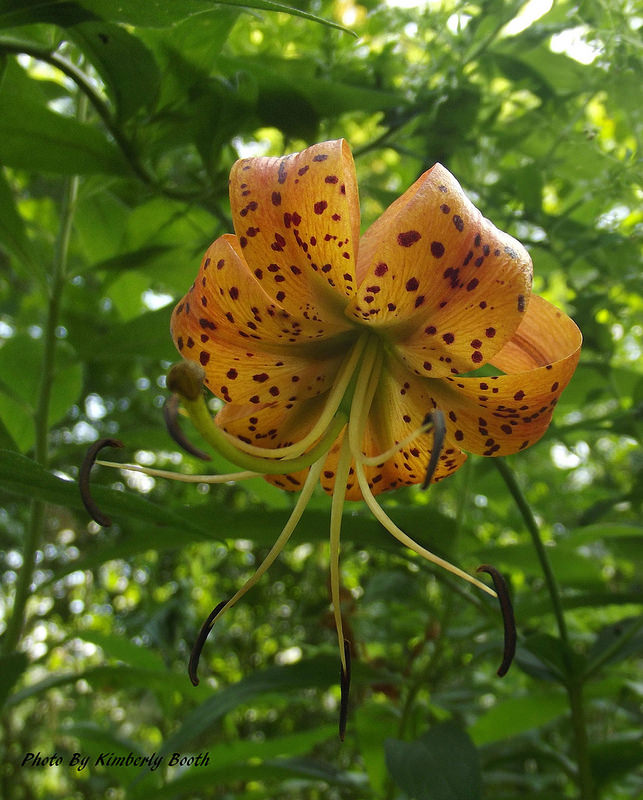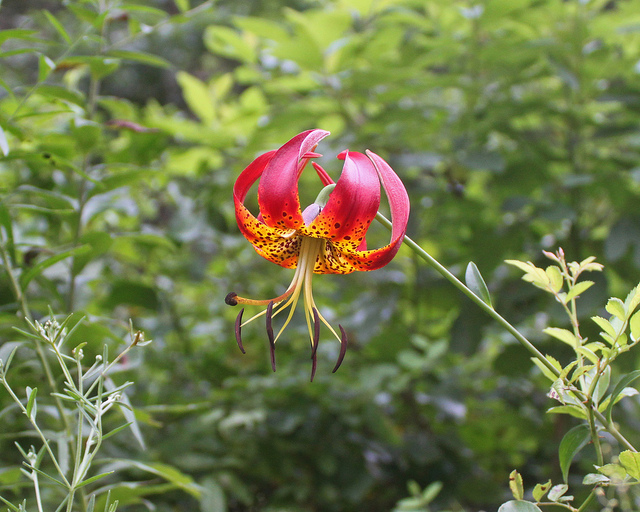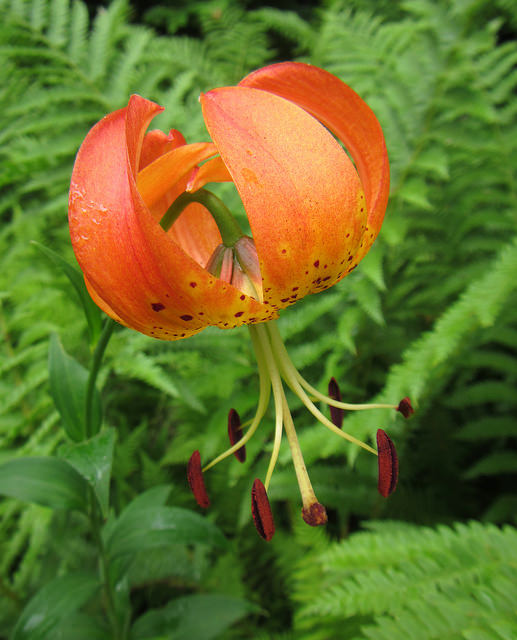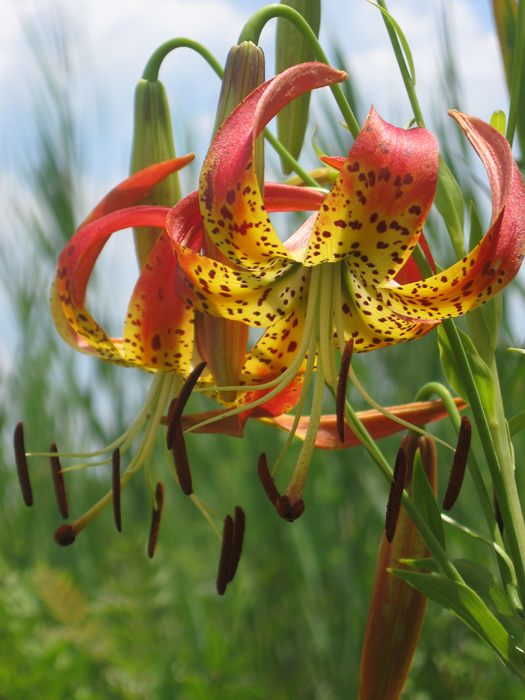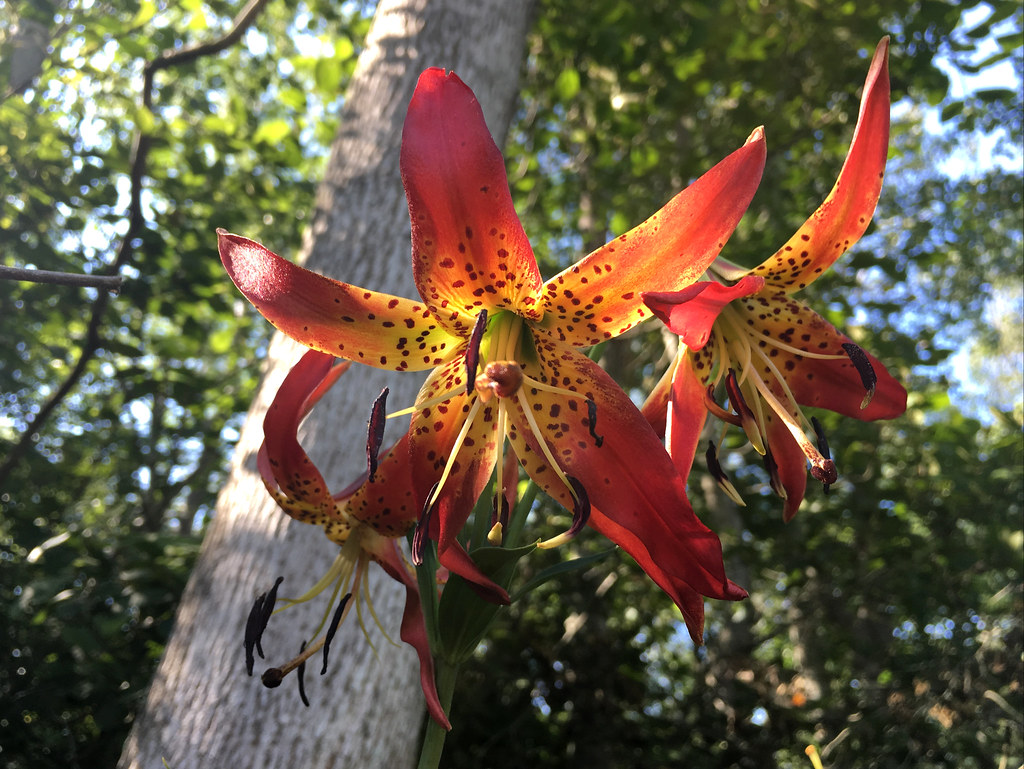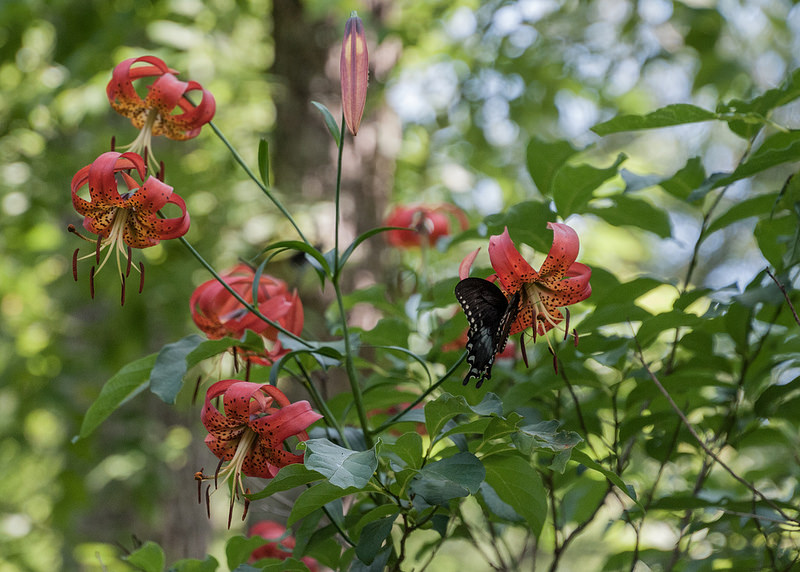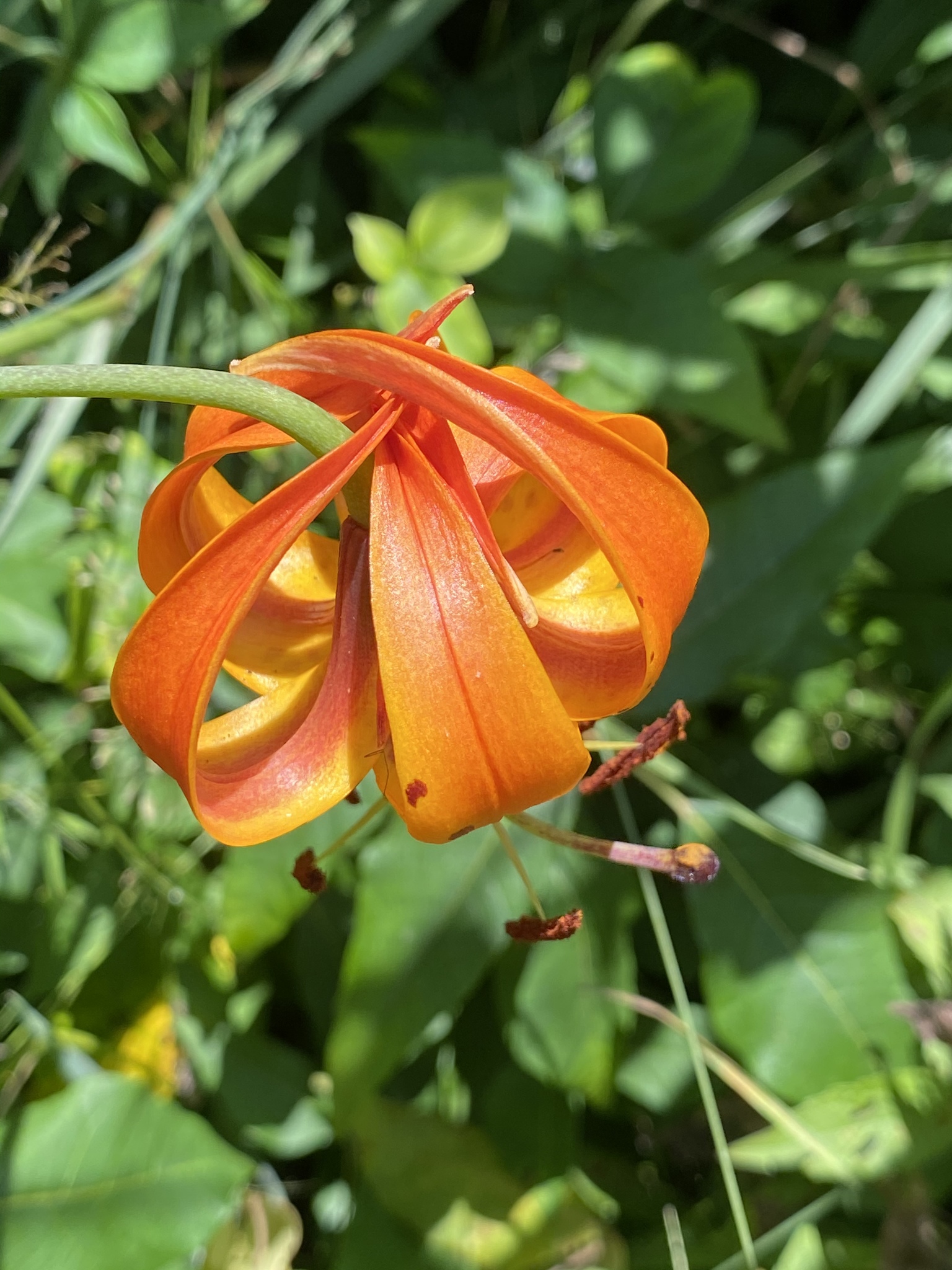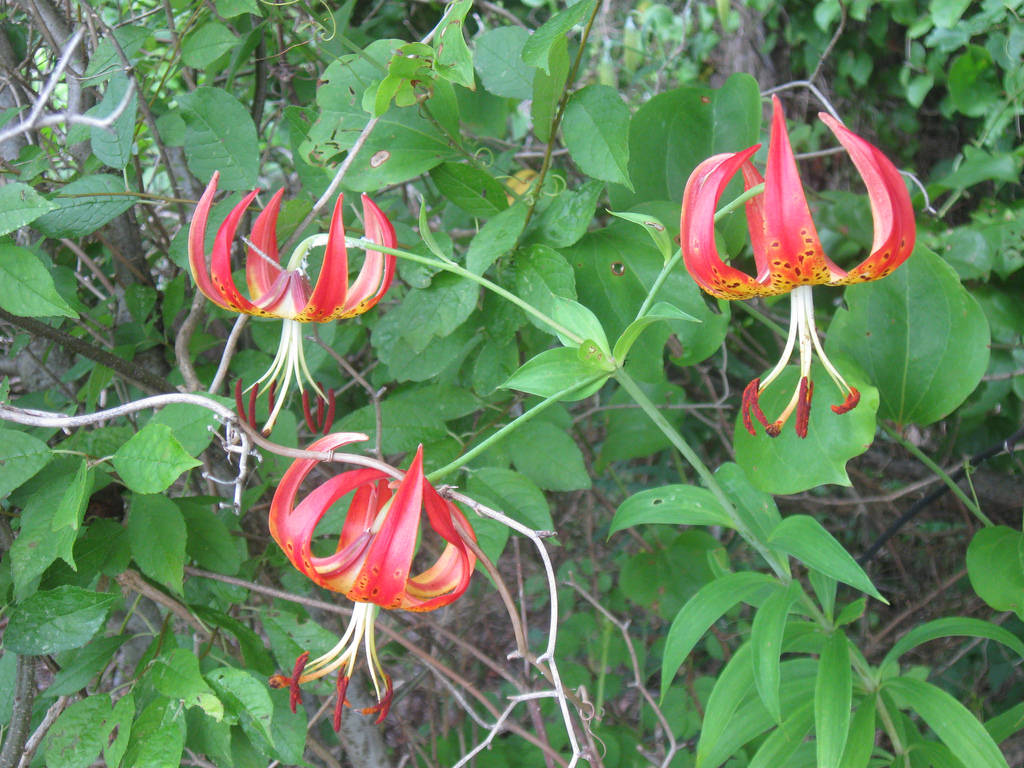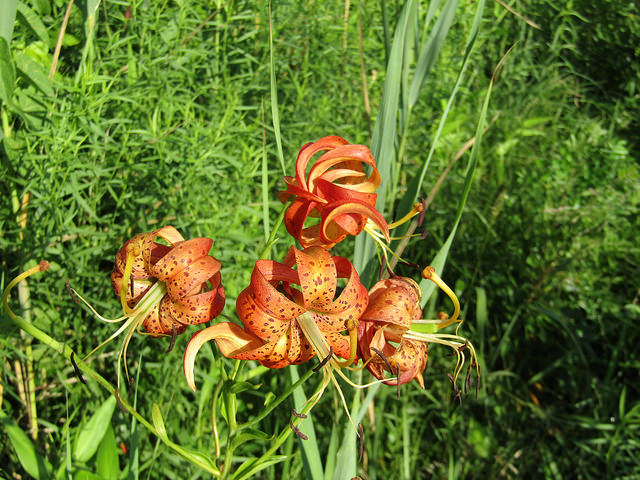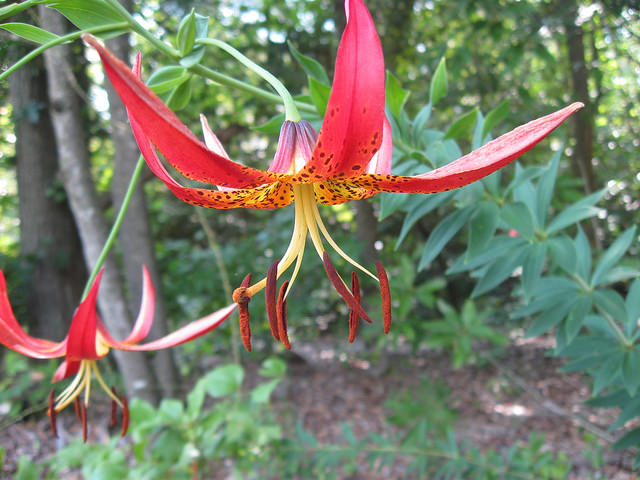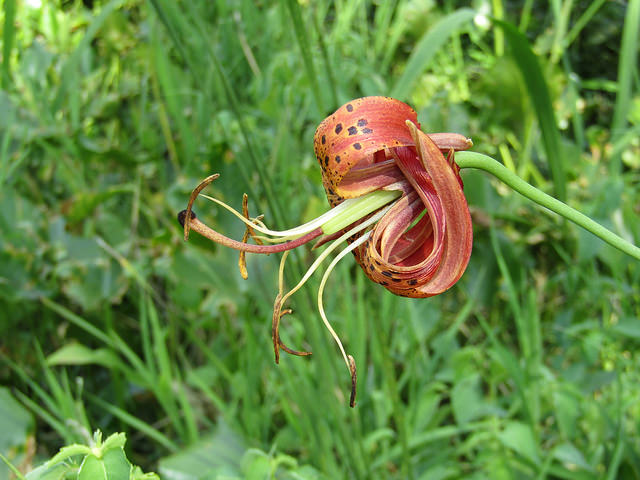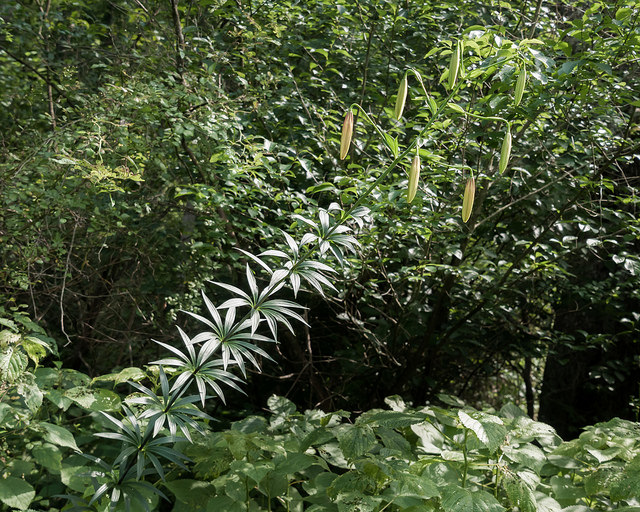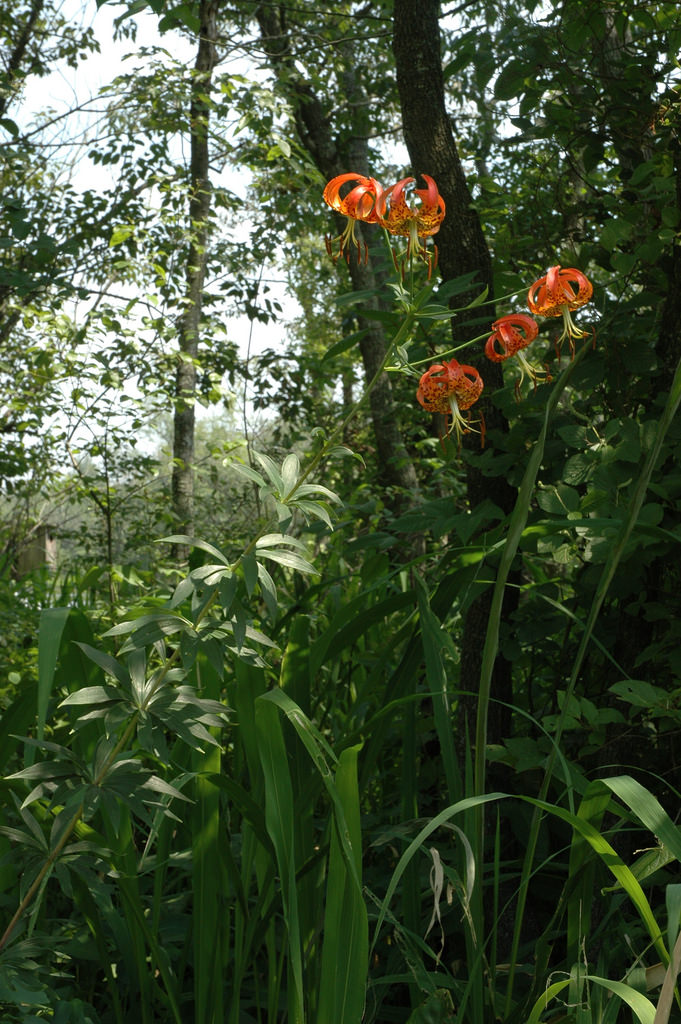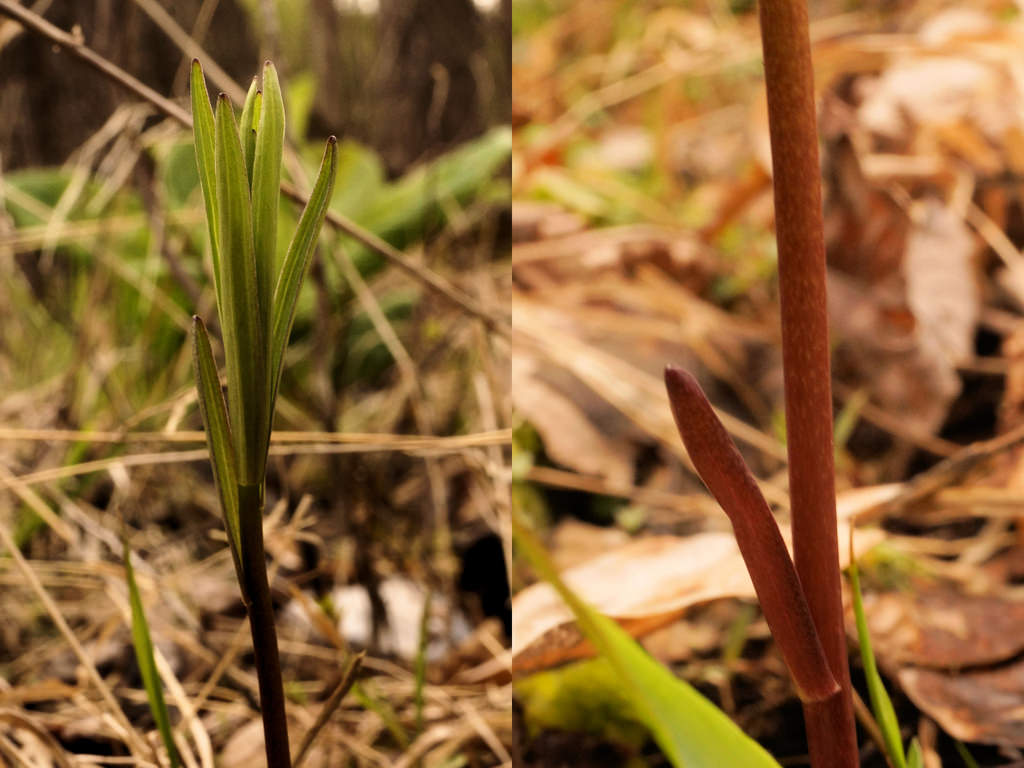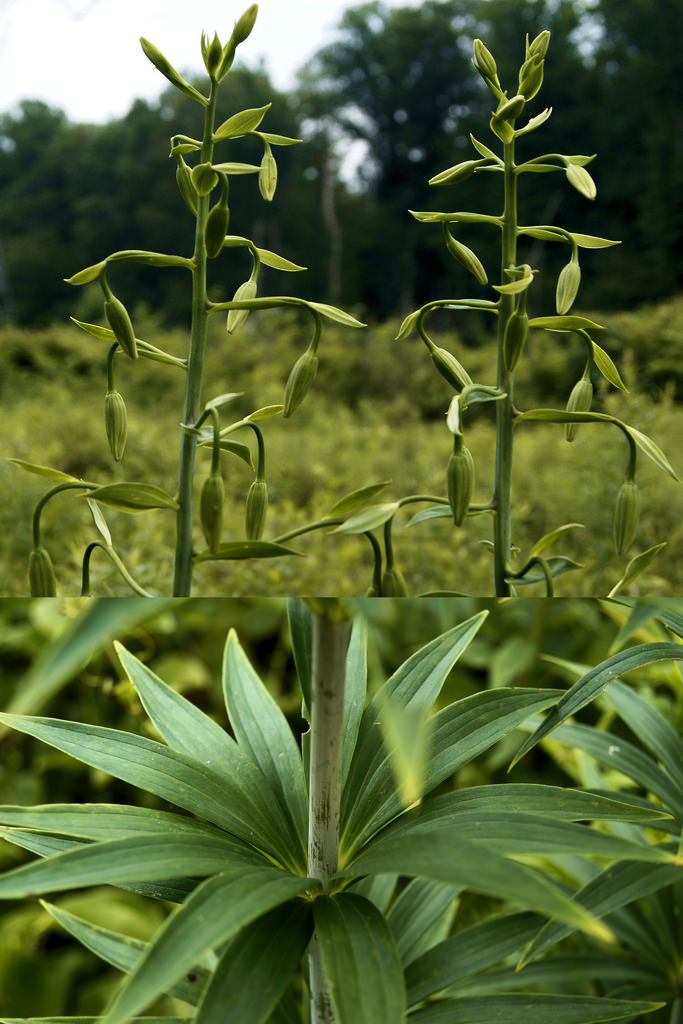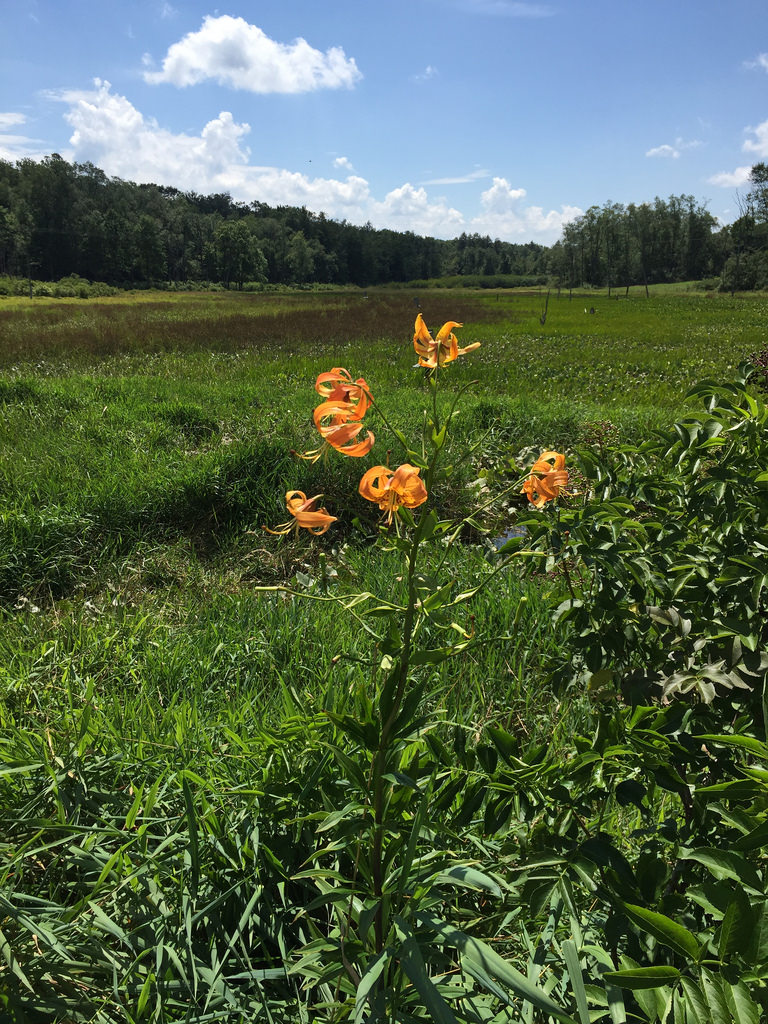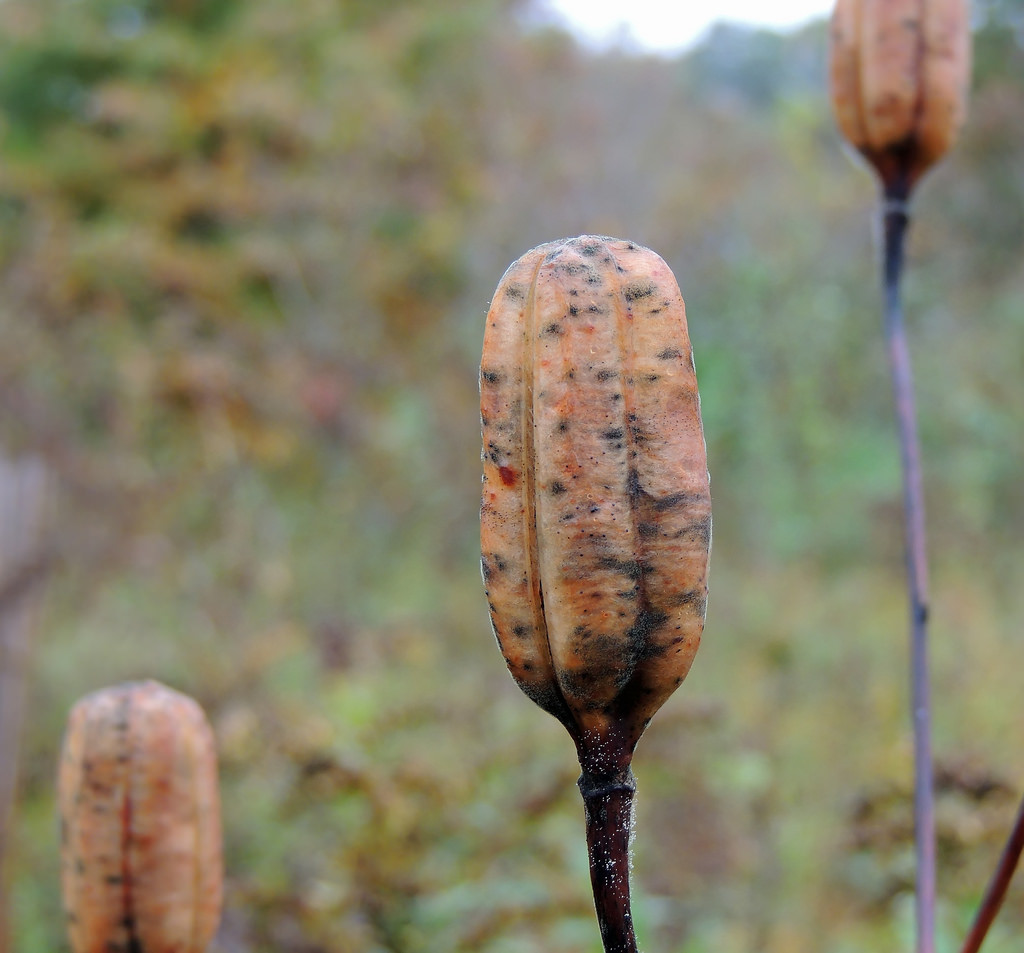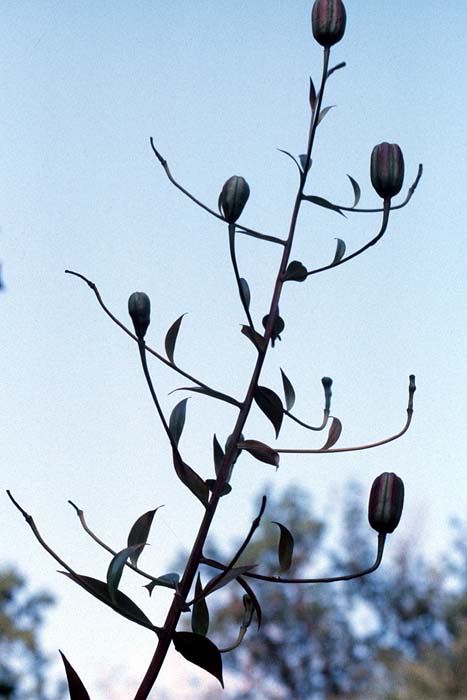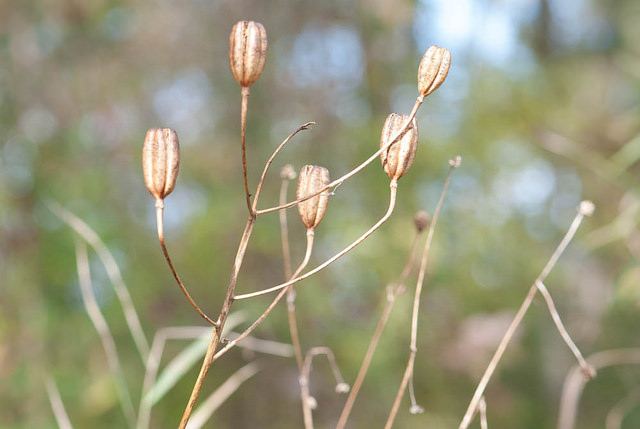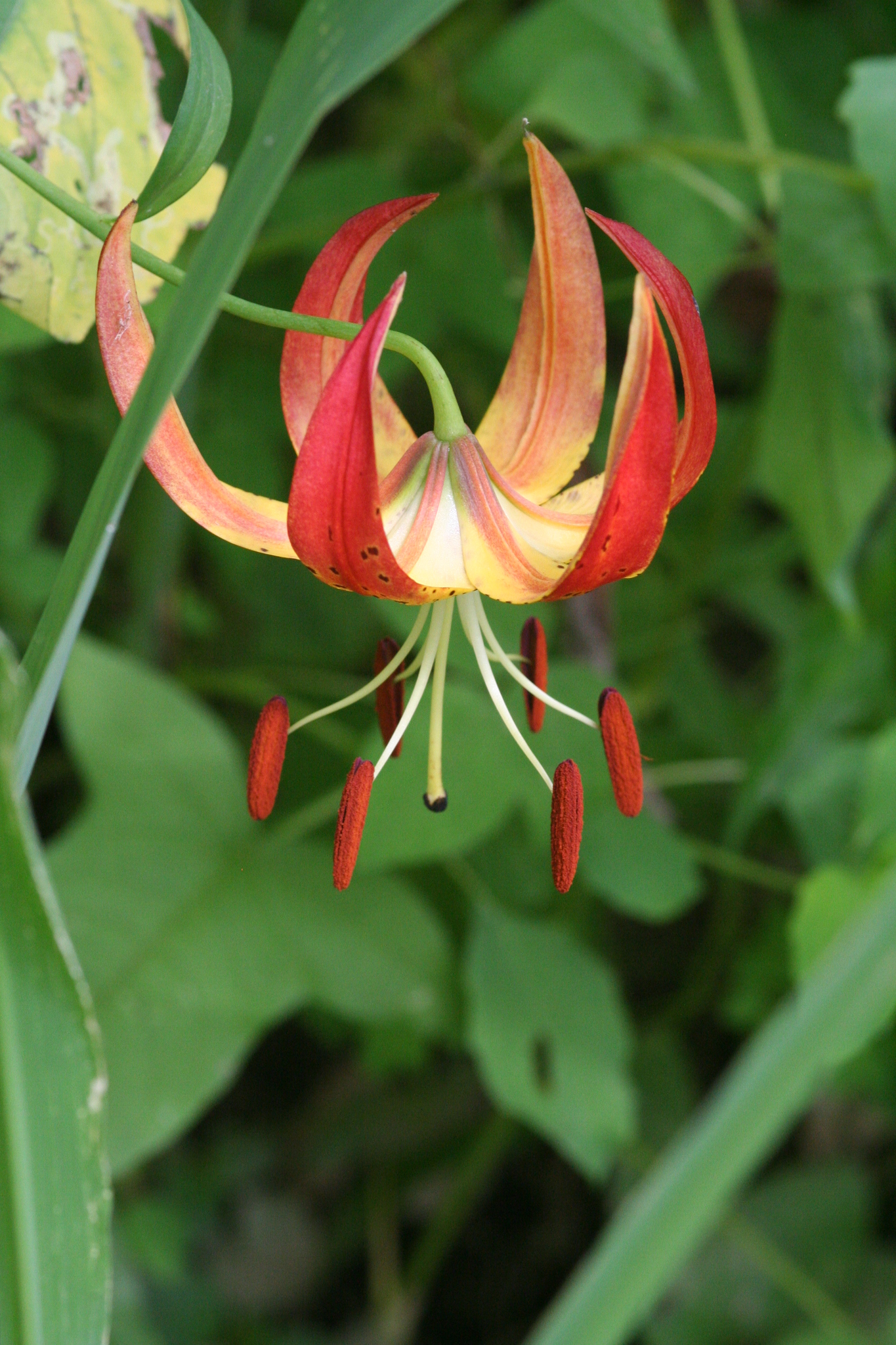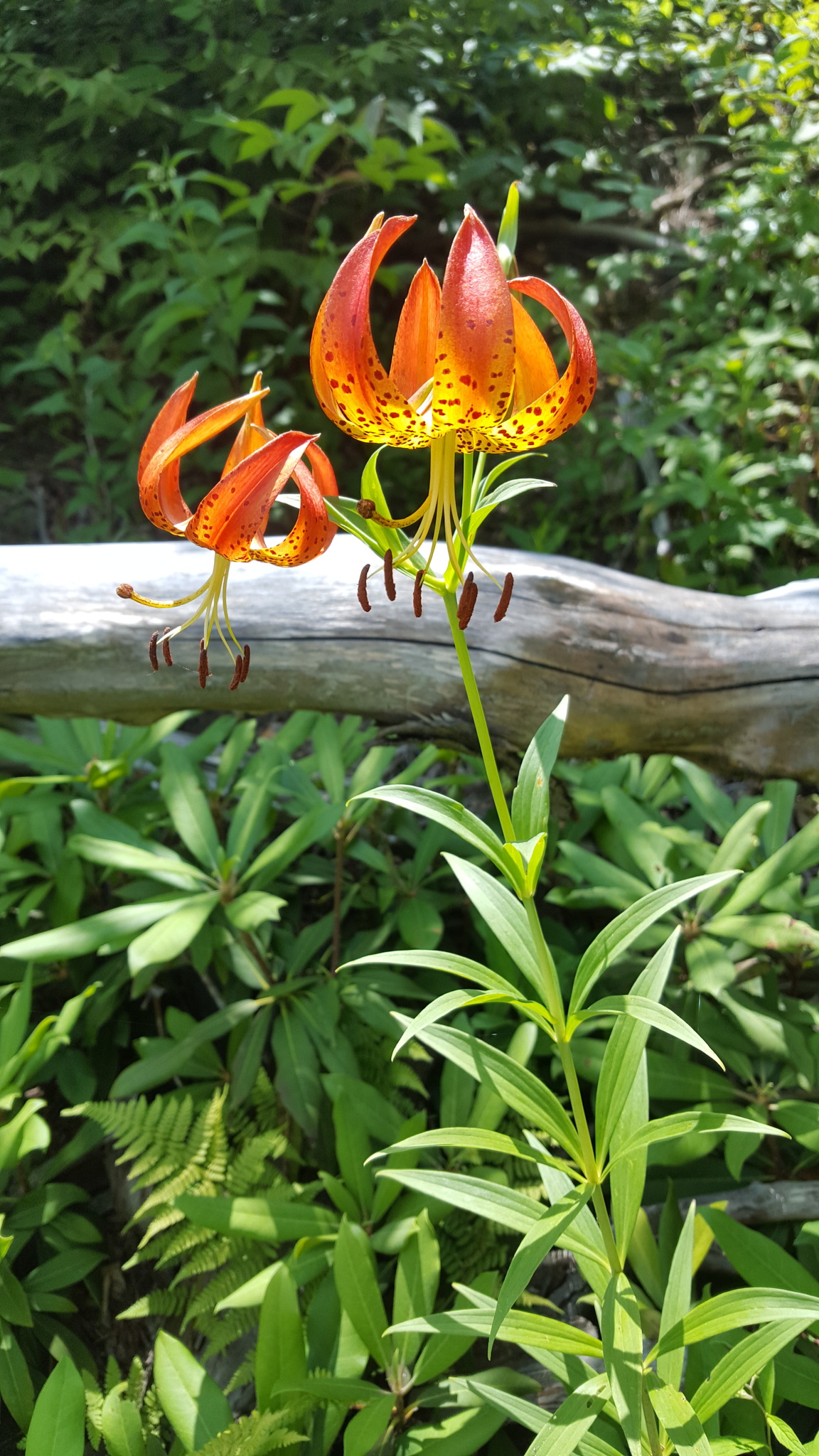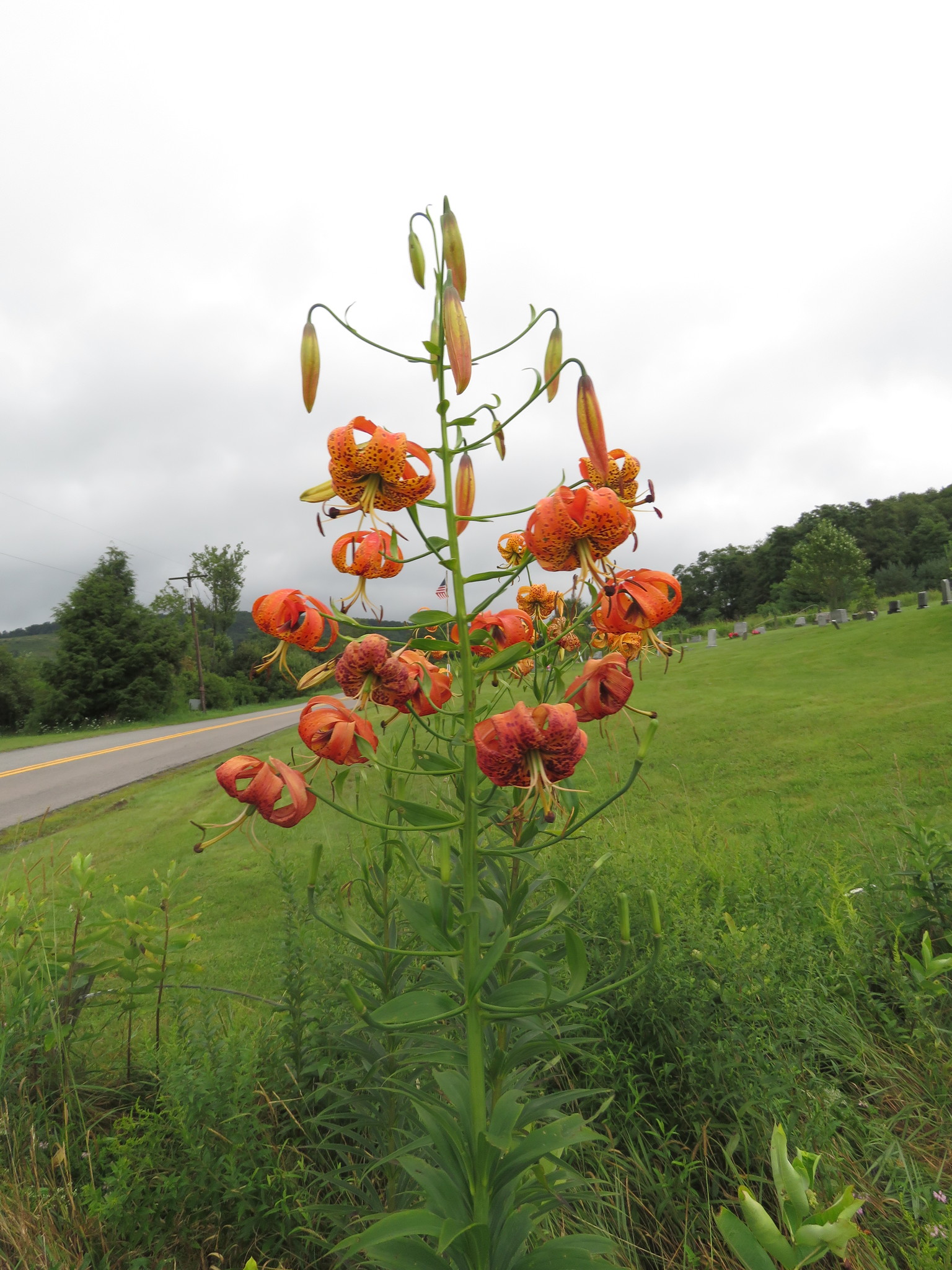Map Snapshot






















279 Records
Status
Turk's-cap Lily is native to eastern North America. Look for it in wet meadows and along streams, especially in the mountains and the Eastern Shore, in our region (J. Hill/MNPS).
Description
The tallest and most spectacular of the American lilies, generally reaching 4-6'. The sepals and petals are strongly swept back (reflexed). The petals are spotted with purple. Inside the flower, green streaks at the base of each petal form a central star, which distinguishes this species from escaped, cultivated, Asiatic "tigerlilies." The stamens of Turk's-cap project from the flower, and the anthers are long, dark, and conspicuous. The flowers are arranged in a loose inflorescence atop an upright stem. They bloom early to mid-summer. The leaves are arranged in whorls around the stem (J. Hill/MNPS). Compare non-native Tiger Lily.
Seasonality Snapshot
Source: Wikipedia
| Lilium superbum | |
|---|---|
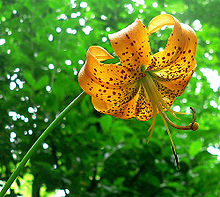
| |
| Lilium superbum in Great Smoky Mountains National Park, North Carolina | |
| Scientific classification | |
| Kingdom: | Plantae |
| Clade: | Tracheophytes |
| Clade: | Angiosperms |
| Clade: | Monocots |
| Order: | Liliales |
| Family: | Liliaceae |
| Subfamily: | Lilioideae |
| Tribe: | Lilieae |
| Genus: | Lilium |
| Species: | L. superbum
|
| Binomial name | |
| Lilium superbum L. 1753 not Thunb. 1784
| |
| Synonyms[2] | |
| |
Lilium superbum is a species of true lily native to the eastern and central regions of North America.[3][4][5] Common names include Turk's cap lily,[3] turban lily,[4] swamp lily,[6] lily royal,[6] or American tiger lily.[citation needed] The native range of the species extends from southern New Hampshire, Massachusetts, and New York, west to Illinois, Missouri, and Arkansas, and south to Georgia, Alabama, Mississippi, and Florida.[3][7]
Description
[edit]Lilium superbum grows from 3–7 feet (0.91–2.13 m) high with typically three to seven blooms, but exceptional specimens have been observed with up to 40 flowers on each stem.[4] It is capable of growing in wet conditions.[8] It is fairly variable in size, form, and color.[4] The color is known to range from a deep yellow to orange to a reddish-orange "flame" coloring with reddish petal tips.[4] The flowers have a green star at their center that can be used to distinguish L. superbum from the Asiatic "tigerlilies" that frequently escape from cultivation.[5] It grows in swamps, woods, and wet meadows.[9]
Uses
[edit]The roots were a food source for Native Americans, and the flowers provide nectar for hummingbirds and larger insects.[10]
Status
[edit]It is listed as endangered in Florida, New Hampshire, Alberta and Saskatchewan and threatened in Kentucky, and exploitably vulnerable in New York.[3]
Etymology
[edit]The Turk's cap common name is derived from the reflexed shape of the flower petals, which presumably resemble a type of hat worn by early Turkish people.[9]
Toxicity
[edit]Cats
[edit]Cats are extremely sensitive to lily toxicity and ingestion is often fatal;[11][12][13] households and gardens that are visited by cats are strongly advised against keeping this plant or placing dried flowers where a cat may brush against them and become dusted with pollen that they then consume while cleaning. Suspected cases require urgent veterinary attention.[14] Rapid treatment with activated charcoal and/or induced vomiting can reduce the amount of toxin absorbed (this is time-sensitive so in some cases vets may advise doing it at home), and large amounts of fluid by IV can reduce damage to kidneys to increase the chances of survival.[14]
Traditional uses
[edit]The bulbs were made into soups by some Native Americans.[15]
References
[edit]- ^ NatureServe (30 June 2023). "Lilium superbum". NatureServe Network Biodiversity Location Data accessed through NatureServe Explorer. Arlington, Virginia: NatureServe. Retrieved 15 July 2023.
- ^ Kew World Checklist of Selected Plant Families
- ^ a b c d United States Department of Agriculture plants profile
- ^ a b c d e Blanchan, Neltje (2005). Wild Flowers Worth Knowing. Project Gutenberg Literary Archive Foundation.
- ^ a b Connecticut Botanical Society
- ^ a b "Lilium superbum". Germplasm Resources Information Network. Agricultural Research Service, United States Department of Agriculture. Retrieved 20 December 2014.
- ^ Biota of North America Program 2014 county distribution map
- ^ Synge, Patrick M. Collins Guide to Bulbs. (1961)
- ^ a b "Lady Bird Johnson Wildflower Center - The University of Texas at Austin". www.wildflower.org.
- ^ Hilty, John (2020). "Turk's Cap Lily". Illinois Wildflowers. Retrieved 15 July 2023.
- ^ Frequently Asked Questions No Lilies For Cats.
- ^ Fitzgerald, KT (2010). "Lily toxicity in the cat". Top Companion Anim Med. 25 (4): 213–7. doi:10.1053/j.tcam.2010.09.006. PMID 21147474.
- ^ Pearson, Dan (21 July 2013). "Turk's cap lily is pure delight". The Guardian. Retrieved 15 July 2023.
- ^ a b Morrison, Barri J. (30 September 2022). "Lily Poisoning in Cats". Pet MD. Retrieved 15 July 2023.
- ^ Niering, William A.; Olmstead, Nancy C. (1985) [1979]. The Audubon Society Field Guide to North American Wildflowers, Eastern Region. Knopf. p. 603. ISBN 0-394-50432-1.
External links
[edit]- USDA Plants Profile for Lilium superbum (turk's-cap lily)
- Missouri Botanical Garden, Kemper Center for Home Gardening: Turkscap lily (Lilium superbum)
- Lady Bird Johnson Wildflower Center Native Plant Information Network−NPIN: Lilium superbum (Turk's-cap lily) — with horticultural info.
 Media related to Lilium superbum at Wikimedia Commons
Media related to Lilium superbum at Wikimedia Commons
